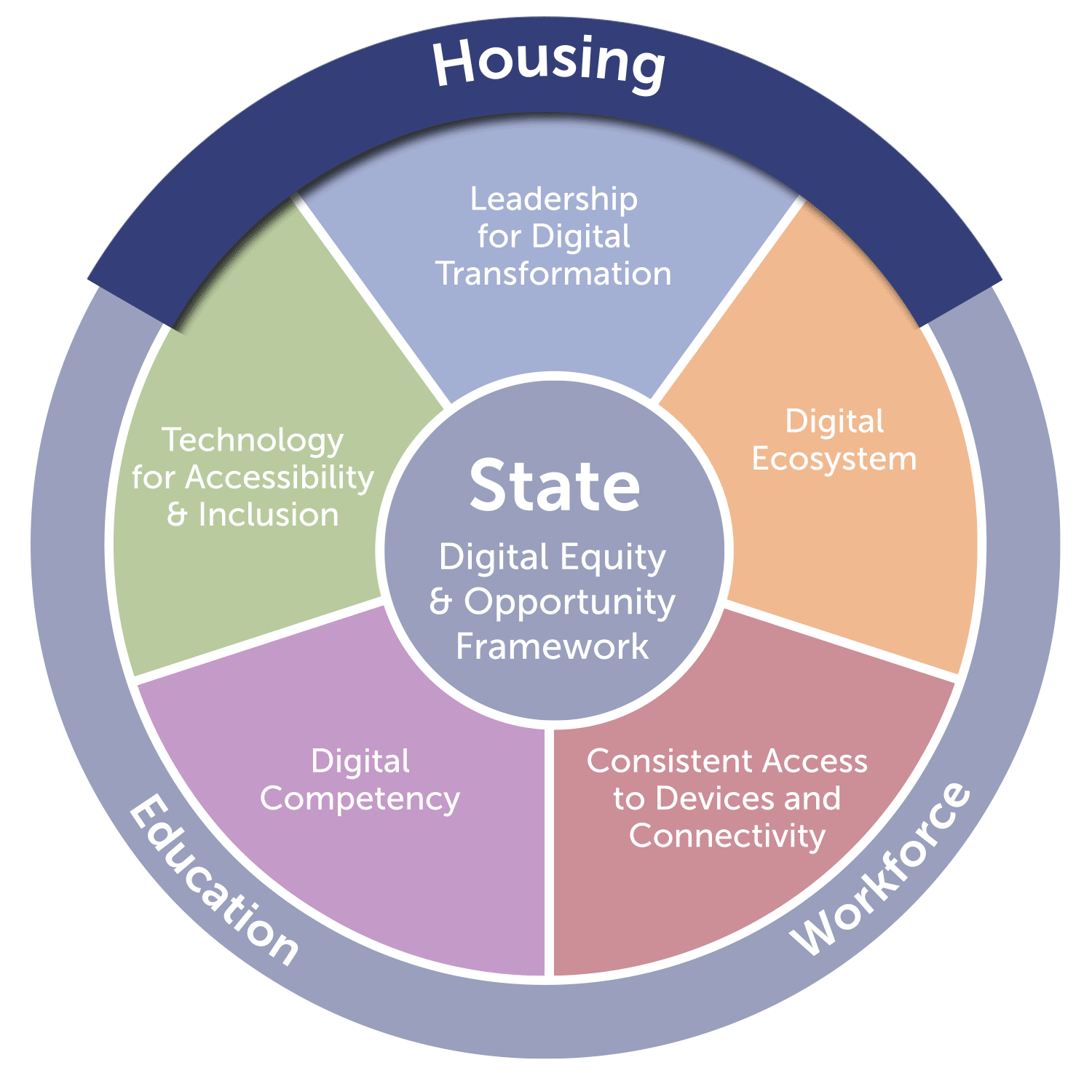These policy recommendations and initiatives aim to expand broadband infrastructure to residential areas, with a focus on unserved, underserved, and rural communities, as well as marginalized groups, including racial and ethnic minorities. This expansion will ensure that families from diverse socio-economic backgrounds can fully benefit from enhanced educational opportunities, improved work prospects, and better access to health and human services.

Form a state-level digital advisory board for housing that includes representatives from the Department of Housing and Urban Development (HUD), Public Housing Authority (PHA), diverse housing communities (including rural, Tribal, and owners of Multi-Dwelling Units (MDUs)) and technical experts to provide guidance on housing technology needs and policies. (Connect Home USA Vol.2 2022)
Install or improve existing broadband infrastructure in MDUs such as apartment buildings, all affordable/subsidized housing, and rural communities to provide high-speed internet access.
Provide funding for the adoption of free or low-cost WiFi and wireless internet programs for residential developers and landlords of affordable/subsidized housing and rural communities (Chen, W., &Li, X. 2021).
Establish conveniently placed digital resource centers and hubs (or computer labs) within affordable housing communities and government-run locations such as libraries to provide residents with free and easy access to technology and tools.
Develop a certification for housing developments that meet high standards of broadband connectivity. (Sean Gonsalves 2022)
Implement digital fluency and internet safety programs within community centers located in affordable/low-income housing areas, public libraries, places of worship (i.e., churches) and schools in order to empower families to make the most of their connectivity.
Offer grants for the adoption or expansion of the Digital Navigator model within community-based organizations, affordable housing developments, and rural communities. This will provide critical support for individuals as they navigate affordable internet services, new digital devices, and digital skills training for full participation in modern society, education, employment, healthcare, and social services.
Offer grants or subsidies to homeowners and landlords for installing accessible technology devices and modifications in residential properties. This can include smart home automation systems, emergency alert systems, and environmental control units.
Develop a certification for housing development that supports assistive technology for students and their families (Skinner, B. T., Levy, H., & Burtch, T., 2023), (Skinner, B., Burtch, T., & Levy, H. 2024).